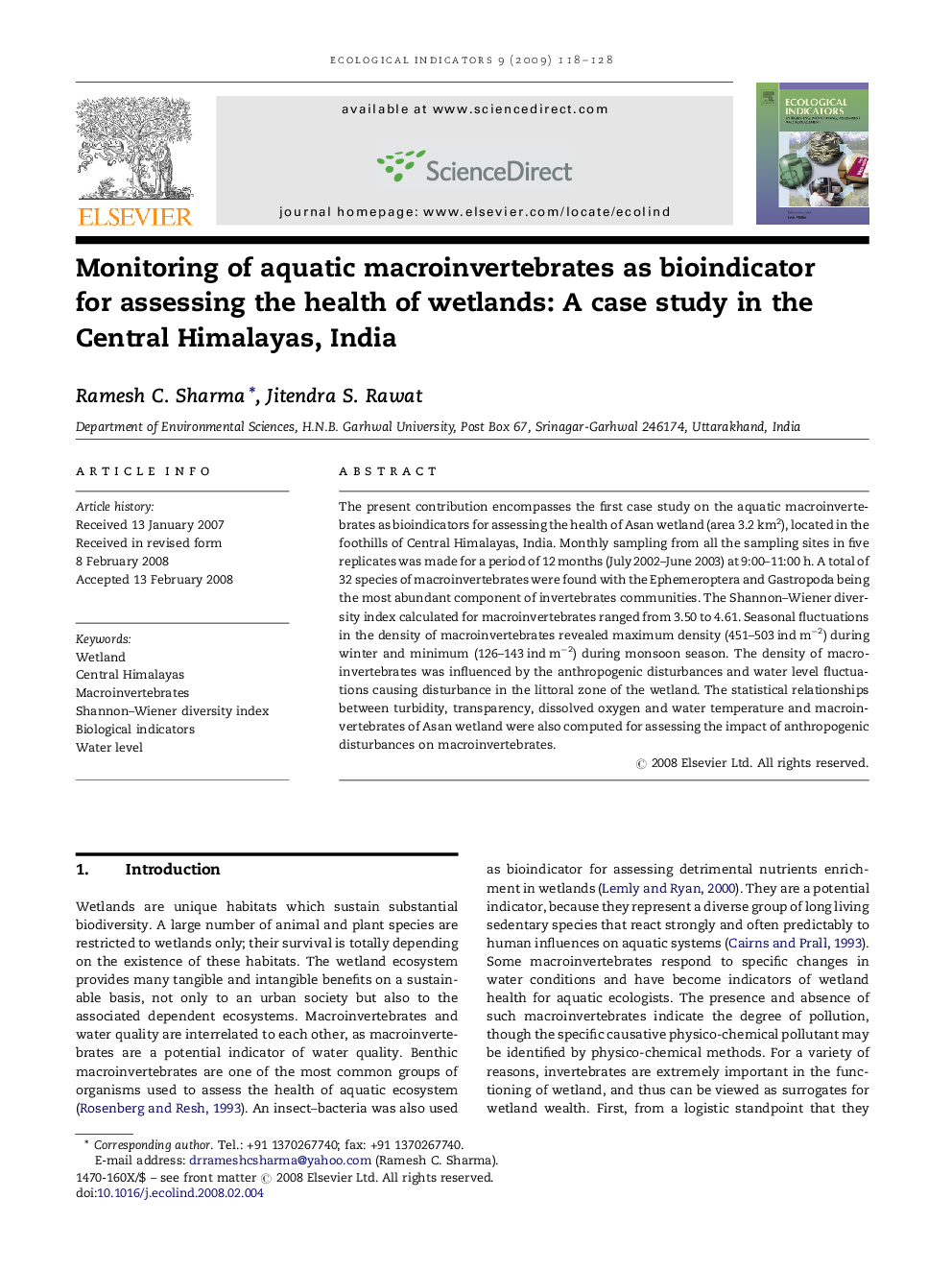| Article ID | Journal | Published Year | Pages | File Type |
|---|---|---|---|---|
| 4374560 | Ecological Indicators | 2009 | 11 Pages |
The present contribution encompasses the first case study on the aquatic macroinvertebrates as bioindicators for assessing the health of Asan wetland (area 3.2 km2), located in the foothills of Central Himalayas, India. Monthly sampling from all the sampling sites in five replicates was made for a period of 12 months (July 2002–June 2003) at 9:00–11:00 h. A total of 32 species of macroinvertebrates were found with the Ephemeroptera and Gastropoda being the most abundant component of invertebrates communities. The Shannon–Wiener diversity index calculated for macroinvertebrates ranged from 3.50 to 4.61. Seasonal fluctuations in the density of macroinvertebrates revealed maximum density (451–503 ind m−2) during winter and minimum (126–143 ind m−2) during monsoon season. The density of macroinvertebrates was influenced by the anthropogenic disturbances and water level fluctuations causing disturbance in the littoral zone of the wetland. The statistical relationships between turbidity, transparency, dissolved oxygen and water temperature and macroinvertebrates of Asan wetland were also computed for assessing the impact of anthropogenic disturbances on macroinvertebrates.
